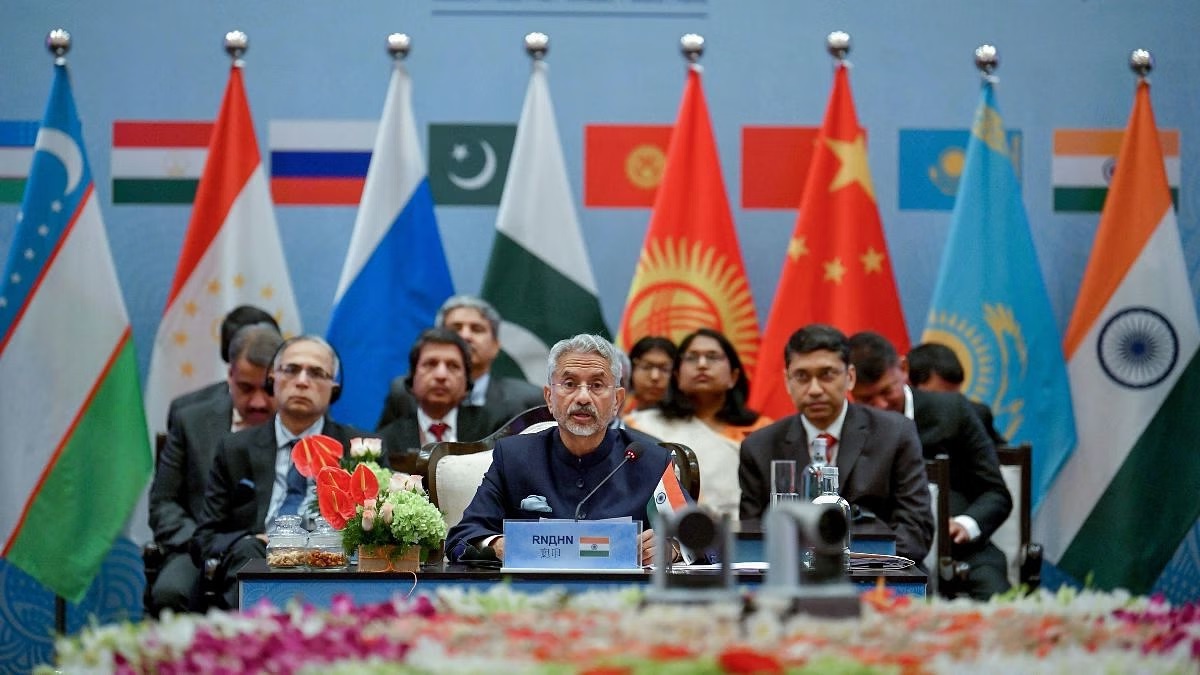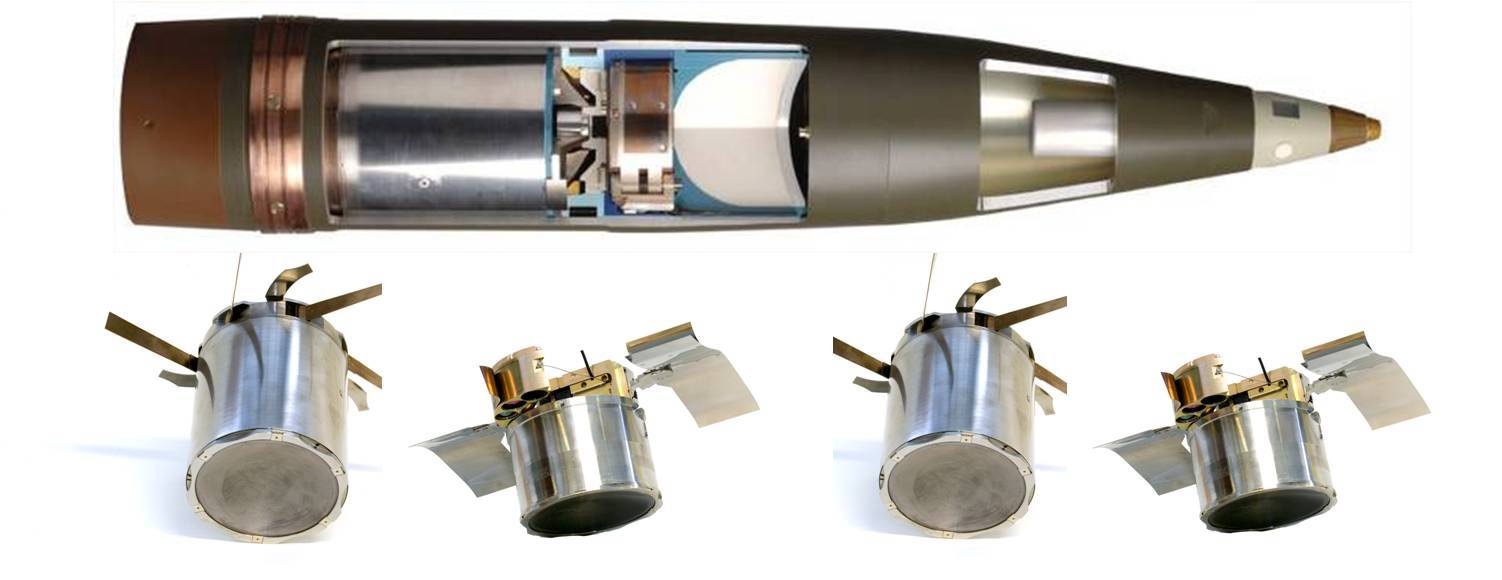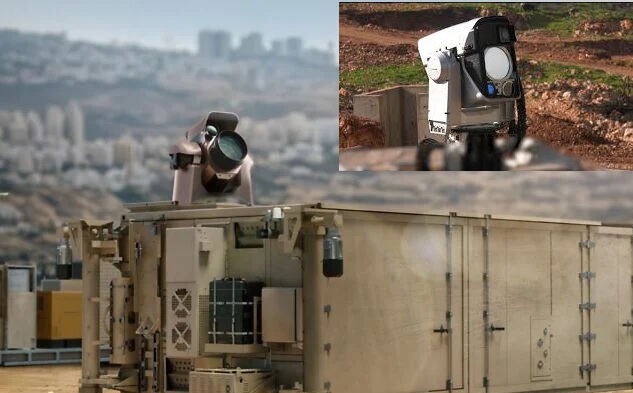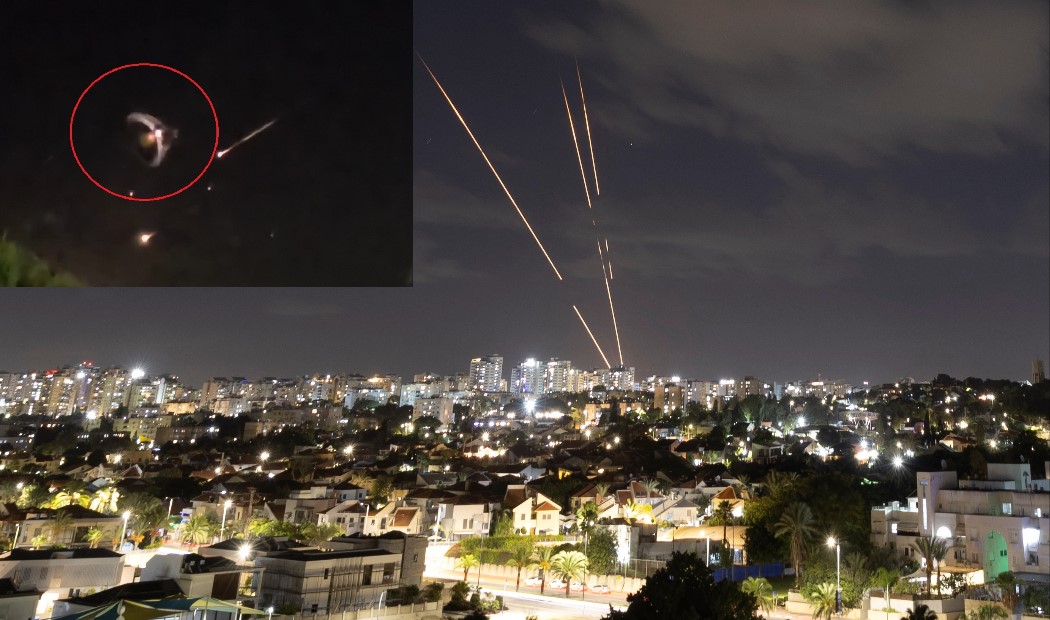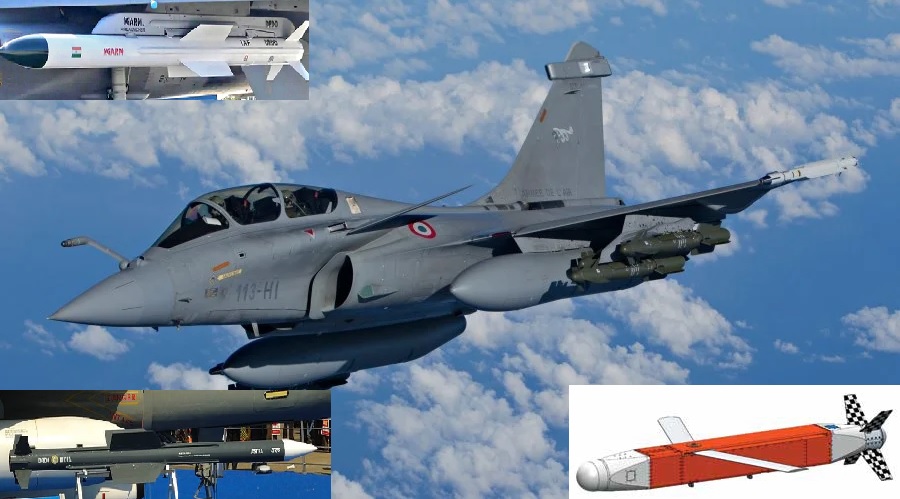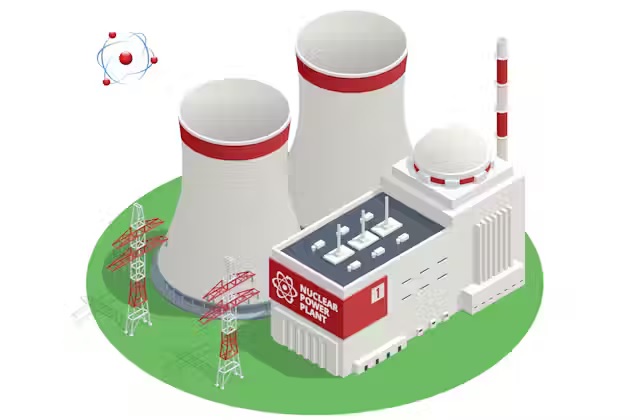India
India has chosen to tread a careful diplomatic path amid rising tensions in the Middle East, as it opted not to participate in the Shanghai Cooperation Organisation’s (SCO) recent joint condemnation of Israeli military strikes on Iranian territory. While other SCO member states—led by China, Russia, and including Pakistan—issued a strongly worded statement on the June 13 strikes, India decided to stay out of the bloc’s political messaging, instead reiterating its independent stance urging de-escalation and dialogue. The SCO, a 10-member Eurasian regional grouping, condemned Israel for what it described as “a gross violation of international law and the United Nations Charter.” According to the SCO statement, the Israeli attacks targeted “civilian infrastructure, including energy and transport networks,” resulting in casualties and significant damage. The statement also warned of serious consequences for regional and global stability, urging a peaceful and diplomatic resolution to tensions involving Iran, particularly over its nuclear program. India, however, took a notably different approach. It declined to join the discussions that led to the SCO’s condemnation. A spokesperson from India’s Ministry of External Affairs made it clear that New Delhi had already communicated its position on June 13—the same day as the strikes—stressing the importance of dialogue and restraint. “We urge that channels of dialogue and diplomacy be utilised to work towards de-escalation,” the spokesperson said, adding that India continues to support international efforts aimed at easing tensions. India’s External Affairs Minister also reached out directly to his Iranian counterpart, conveying India’s concern and calling for calm. This bilateral engagement was intended to show India’s seriousness about the issue without getting entangled in the SCO’s collective political posturing. The decision to distance itself from the SCO’s strongly worded statement appears to be a strategic one. India has vital interests on both sides: it shares deep defense, economic, and technological ties with Israel, while also maintaining long-standing civilizational and energy relationships with Iran. Moreover, India values its position in the SCO, which includes key regional players like Russia, China, and the Central Asian nations. Walking this tightrope is part of India’s broader foreign policy strategy—engaging with multiple partners without taking sides. This is not the first time India has taken an independent path within multilateral groupings. Its approach underscores a consistent diplomatic principle: prioritizing national interests and maintaining strategic autonomy while calling for peace and stability through non-confrontational means. As the Middle East grapples with the threat of further escalation, India’s cautious response signals its preference for a balanced role—one that avoids taking sides in conflicts but remains actively engaged in promoting peace and dialogue.
Read More → Posted on 2025-06-14 15:42:07World
Former President Donald Trump has long promised to keep the United States out of “forever wars,” but Israel’s large-scale military strikes on Iran have brought that vow into sharp focus. The escalating conflict is now forcing Trump to walk a fine line between supporting a close ally and maintaining his non-interventionist image — a key appeal for his core political base. As Israel launched powerful airstrikes on Iranian military targets, Trump publicly warned that such an attack could lead to “massive conflict.” Yet, just hours later, he praised Israel’s actions, calling them “excellent,” and boasted about the advanced American-made weapons the Israeli military used. Trump also warned Iran that more strikes would come if it didn’t agree to a deal, signaling his readiness to back Israel’s aggressive posture — even as he insists the U.S. won't get directly involved. Behind the scenes, the U.S. did play a role. American forces reportedly helped Israel intercept Iranian missiles fired in retaliation. Officially, Secretary of State Marco Rubio emphasized that the U.S. was not part of the strike and warned Iran not to retaliate against U.S. troops stationed across the Middle East. But experts believe the message is clear: the U.S. is supporting Israel while publicly trying to appear neutral, hoping Iran will not escalate further. Trump’s team had been trying to negotiate with Iran. His envoy, Steve Witkoff, was due for a sixth meeting with Iranian officials the same weekend the strikes took place. This diplomacy-first approach has been part of Trump’s broader strategy of reducing direct military involvement abroad. However, the Israeli strikes may now derail that path and force Trump to choose how far he is willing to go in backing Israel militarily. This development has sparked division even within Trump’s inner circle and political base. Many top Republican lawmakers have rallied behind Israel, supporting Prime Minister Benjamin Netanyahu, who is viewed as a strong ally and a hero to much of the American right. However, Trump's populist and non-interventionist supporters are more cautious. Conservative commentator Tucker Carlson, who previously advised Trump against attacking Iran, warned of internal divisions in Trump’s camp — between “warmongers and peacemakers.” Echoing this sentiment, Trump’s Director of National Intelligence, Tulsi Gabbard, released a video warning that world leaders risk nuclear catastrophe if they pursue warlike policies. Trump himself, in a recent speech in Saudi Arabia, criticized America’s long history of military entanglements in the Middle East, stating, “I don’t like war. My greatest hope is to be a peacemaker.” Now, however, the question is how much support he’s willing to offer Israel if the situation worsens. Some experts, like former U.S. ambassador to Israel Daniel Shapiro, say Trump will have to decide whether to authorize U.S. capabilities to destroy Iranian underground nuclear sites — a move that would almost certainly drag America deeper into the conflict. That decision, Shapiro notes, would likely divide Trump’s advisors and his voter base. The political opposition has also been vocal. Many Democrats strongly oppose Netanyahu, especially over Israel’s military operations in Gaza. Congressman Joaquin Castro called the Israeli attack “pure sabotage” and questioned how Trump’s “America First” policy fits with being pulled into another war. Geopolitical analysts warn that this crisis could open doors for adversaries like China to act more aggressively, such as making moves on Taiwan while the U.S. is distracted. They also note that even if U.S. troops don't enter combat, America may still be drawn into prolonged support — through weapons, intelligence, and diplomacy — as the war expands. In a world already shaken by the war in Ukraine and rising tensions in the Asia-Pacific, the fear is that yet another conflict could spiral beyond anyone’s control. For Trump, the promise to avoid endless wars is now colliding with the harsh reality of global power politics — and the decisions he makes next could define his legacy.
Read More → Posted on 2025-06-14 15:38:17World
In a shocking incident over Ukraine’s Donetsk region, a Russian Air Force Su-25 attack aircraft was accidentally shot down by its own wingman during a combat mission. The incident highlights the growing problem of friendly fire within Russian military operations in the ongoing war in Ukraine. According to reports from Russian aviation blogger Ilya Tumanov, who runs the popular Fighterbomber Telegram channel, the incident took place during a sortie in the Vuhledar–Avdiivka area. Two Su-25 attack aircraft had taken off from the Taganrog-Central air base and were carrying out a mission when tragedy struck. During the operation, one of the pilots mistakenly fired a salvo of unguided rockets that hit his wingman’s aircraft. A video later shared online captured the moment of the crash. Thankfully, the pilot managed to eject and survived the crash, though he sustained a broken arm and was immediately hospitalized. Tumanov confirmed that an official investigation is underway to determine the exact circumstances and assign responsibility for the mishap. He stated, “The causes of the Su-25 crash can be considered established.” The incident was also verified by Ukrainian open-source intelligence analyst AviVector, who confirmed the crash and added that the aircraft was operating in the heavily contested Donetsk sector when it went down. This is not an isolated case. Russian forces have suffered several friendly fire incidents since the beginning of the Ukraine conflict. Last year, a Russian Mi-8MTV-5 helicopter was shot down by its own side, killing the entire crew. In another case, a Russian Navy tugboat and a barge came under attack in the Sea of Azov, with authorities not ruling out the possibility of a strike from their own military. Even within Russian military circles, there’s acknowledgment that such mistakes are becoming frequent. Yurii Ihnat, spokesperson for the Ukrainian Air Force, has commented that poor coordination and communication among Russian units often lead to these avoidable accidents. This latest incident reflects the operational challenges the Russian military continues to face — from technological limitations to coordination lapses — further complicating their campaign in Ukraine.
Read More → Posted on 2025-06-14 15:28:28World
A dramatic claim has emerged from Iranian state media: that its air defense forces successfully shot down two Israeli F-35I Adir stealth fighter jets during a major Israeli air raid on June 13. If proven true, this would mark only the second time in history a stealth combat aircraft has been downed in battle — but Israel has firmly rejected the allegation. Operation ‘Rising Lion’ And The Air Strikes The incident allegedly took place during Operation ‘Rising Lion’, a high-risk Israeli Air Force (IAF) operation targeting Iranian military and nuclear installations. Israeli F-35I Adirs, F-15s, and F-16s reportedly flew around 2,000 kilometers into Iranian airspace, coordinating strikes with drones and missiles from within Iranian territory. These attacks left severe damage to nuclear sites, including Natanz, and reportedly killed senior leaders of Iran’s Revolutionary Guard. The IAF’s prized asset in this operation was the F-35I Adir — Israel’s customized variant of the US-made fifth-generation F-35A stealth fighter. Known for advanced sensors, Israeli-made electronic warfare systems, and long-range strike capability, the Adir was hailed as a key player in penetrating Iran’s sophisticated air defense network. Iran’s Retaliation And Its Claims Following the strikes, Iran retaliated with a volley of ballistic missiles and drone attacks aimed at Tel Aviv and Jerusalem, vowing to inflict serious damage on the “Zionist regime.” Soon after, Iranian state media claimed its air defense systems had intercepted and shot down two Israeli F-35 jets, capturing one female pilot alive after she ejected over Iranian territory. Iranian officials proudly declared it a historic feat — allegedly making Iran the first country to successfully down fifth-generation stealth fighters. However, Israel’s military immediately dismissed the claim as “fake news” and “baseless propaganda,” asserting that no Israeli aircraft were lost during the operation. The “F-35 Crash Photo” Controversy To support its claim, images began circulating on social media — especially on platforms like X (formerly Twitter) and Telegram — showing what was claimed to be wreckage of an F-35I Adir shot down by Iran. But defense analysts and military bloggers were quick to debunk these images. Upon close examination, the aircraft shown in the viral photo did not match the distinct structure and features of an F-35 stealth jet. In fact, the wreckage appeared more like that of a 4th or 4.5-generation fighter aircraft — possibly an old crash photo repurposed to stir propaganda. As of now, Iran has not released any credible images, video evidence, or details about the alleged captured pilot to verify its claims. Can Stealth Jets Be Shot Down? While F-35s are among the most advanced combat jets in the world, no aircraft is completely invisible to radar. Stealth fighters are designed to reduce detection probability, not eliminate it. Interestingly, this isn’t the first time a stealth aircraft has faced danger. In 1999, during the NATO bombing of Yugoslavia, an American F-117 Nighthawk — the world’s first operational stealth jet — was shot down by an old Soviet-era surface-to-air missile system. That incident proved that under the right circumstances, even stealth aircraft can be vulnerable. Earlier this year, a US F-35 Lightning II nearly became a victim of a Houthi missile over Yemen, forcing its pilot to take evasive action. The incident suggested that even modern stealth aircraft are detectable to certain air defense systems. Why This Claim Matters If Iran’s claim were somehow verified, it would be a significant military and political blow to Israel and Lockheed Martin, the F-35’s manufacturer. It would also challenge the long-standing belief in the invulnerability of fifth-generation stealth fighters and raise serious concerns about their survivability in heavily defended airspace. However, given the current absence of concrete proof, widespread skepticism remains — both among defense experts and on the international stage. The Reality: War Propaganda or Truth? In high-stakes conflicts like this, misinformation and propaganda often play as big a role as military operations. Iran’s claim might be an attempt to rally domestic support and intimidate its rivals after the severe damage it reportedly suffered during Operation Rising Lion. For now, the world watches and waits for verified evidence — if any — to emerge.
Read More → Posted on 2025-06-14 14:46:31World
In a major step to strengthen its indirect fire capabilities, the Swedish Armed Forces have signed a $62 million (SEK 600 million) contract with BAE Systems Bofors for the supply of BONUS 155mm precision artillery ammunition. This marks the third such order from Sweden since 2017, highlighting a strong and ongoing partnership focused on enhancing the effectiveness of Sweden’s artillery forces. BONUS—short for BOfors Nutating Shell—is a high-precision, sensor-fuzed artillery shell designed to strike armored targets at long ranges. Developed in collaboration between BAE Systems Bofors and France's Nexter Systems, BONUS stands out for its “fire-and-forget” capability and is already in service with several countries including France, Finland, Norway, the United States, and Sweden itself. Each BONUS shell contains two submunitions that are equipped with advanced infrared sensors and target-recognition algorithms. Once the shell is fired, these submunitions are released over the target area and independently search for enemy vehicles such as tanks, infantry fighting vehicles, self-propelled guns, and armored personnel carriers. When a target is identified, the submunition directs a precisely aimed projectile to destroy it from above, where most armored vehicles are most vulnerable. BONUS can cover an area up to 32,000 square meters in a single shot, providing significant battlefield impact with minimal ammunition usage. When fired from NATO-standard L52 howitzers—such as those used in the ARCHER self-propelled artillery system—the BONUS shell can reach targets up to 35 kilometers away. This combination of range and accuracy makes it an ideal choice for modern artillery operations. Henrik Knape, Ammunition Sales Director at BAE Systems Bofors, expressed pride in the continued trust placed in the company’s technology by Sweden. “This contract for additional BONUS projectiles reinforces our long-standing partnership with the Swedish Armed Forces,” he said. “We are committed to delivering a trusted solution that strengthens their indirect fire capability and keeps their warfighters safe.” The precision and versatility of BONUS ammunition align perfectly with Sweden’s growing investment in advanced defense technologies. By equipping its forces with such high-end systems, Sweden not only enhances its own national security but also strengthens its position as a key contributor to regional and NATO-aligned defense strategies.
Read More → Posted on 2025-06-14 14:29:54India
India and Canada are taking a major step toward mending their strained diplomatic relationship with a new agreement focused on sharing intelligence related to terrorism, transnational crime, and extremist networks. This development comes nearly two years after a major diplomatic rift arose when Canadian officials publicly accused India of involvement in the killing of a Sikh separatist leader on Canadian soil — an allegation India firmly denied. According to officials familiar with the matter, the two governments are now working on a structured arrangement that would enable law enforcement agencies in both countries to exchange sensitive information. This includes intelligence on organized crime groups operating across borders, suspected terrorist activity, and violent extremism. For Canada, the agreement will also focus on investigations linked to extra-judicial killings, reflecting Ottawa’s particular concerns following the 2023 incident near Vancouver. Although the deal is still in the drafting phase and many details remain confidential, the core aim is to improve cooperation between the two nations’ intelligence and security agencies. This would help both countries address growing threats from international criminal syndicates, radical organizations, and activities that exploit gaps in law enforcement coordination. The timing of the agreement is notable. Indian Prime Minister Narendra Modi and Canadian Prime Minister (or likely delegate, Mark Carney) are expected to meet during the upcoming Group of Seven (G7) summit. It remains unclear if the final intelligence-sharing arrangement will be officially unveiled during this high-profile international event, but sources suggest that discussions are moving in a positive direction. This step is being viewed by analysts as a cautious but constructive effort to rebuild diplomatic bridges after a long period of silence and tension. While Canada had taken punitive measures such as expelling Indian diplomats, and India suspended visa services to Canadians during the height of the row, both sides now seem more willing to cooperate, especially in areas where mutual security interests overlap. The proposed intelligence-sharing pact reflects a pragmatic shift in relations, acknowledging that while political differences persist, collaboration on national security and law enforcement remains essential. As global threats become more interconnected, countries like India and Canada recognize the value of working together to prevent terrorism and dismantle cross-border criminal networks.
Read More → Posted on 2025-06-14 14:25:51World
Rafael Advanced Defense Systems has officially introduced its latest high-energy laser defense system — Iron Beam 450 — a major upgrade over its earlier models. This new version features a much larger 450-millimeter beam director, a significant jump from the previous 250mm aperture, bringing with it longer operational range and improved precision. This expanded aperture allows Iron Beam 450 to track and engage airborne threats at greater distances, while also enhancing its ability to stay locked onto fast-moving or small targets even in difficult weather or dusty environments. The larger beam director also improves how the laser travels through the atmosphere, keeping it more concentrated and stable during engagements. Rafael highlighted that these upgrades translate into faster reaction times, extended interception range, and pinpoint targeting accuracy — while retaining the key advantages that make laser systems highly attractive for modern militaries: Speed-of-light neutralization Extremely low cost per shot Virtually unlimited firing capability The Iron Beam 450 will make its international public debut at the Paris Air Show from June 16 to 22. Israel’s Combat-Tested Laser Shield The Iron Beam program is Israel’s answer to short-range aerial threats like drones, rockets, and mortars. Instead of using missiles, it relies on focused laser beams to burn through or disable incoming projectiles in mid-air. Using adaptive optics, the system can precisely hold a laser spot on objects as small as a coin from distances of up to 10 kilometers (6.2 miles). What makes Iron Beam particularly notable is its combat experience. During the Iron Swords conflict, the system was reportedly used against drones and short-range munitions fired by Hezbollah, proving its operational value in real combat conditions. Other Variants on the Way While the Iron Beam 450 is grabbing headlines, Rafael is also showcasing two additional variants: Iron Beam M: A mobile version that keeps the older 250mm beam director but is designed for mobility, allowing it to move alongside frontline troops or secure temporary strategic sites. It trades some range for flexibility and rapid deployment. Lite Beam: A compact, 10-kilowatt laser system aimed at defending convoys, small units, or pop-up military bases. Despite its smaller size, it retains the core benefits of speed, low operating cost, and the ability to fire repeatedly without ammunition limitations. Specifications Overview Feature Iron Beam 450 Iron Beam M Lite Beam Beam Director Size 450mm 250mm N/A (smaller system) Laser Power High-Energy (specific rating undisclosed) High-Energy (same as earlier Iron Beam) 10 kilowatts Effective Range Up to 10 km or more Similar to original Iron Beam Short-range, convoy protection Deployment Type Fixed / Semi-mobile Mobile, frontline capable Rapid-deployment, pop-up defense Per-Intercept Cost Negligible Negligible Negligible Rate of Fire Continuous, virtually unlimited Continuous, virtually unlimited Continuous, virtually unlimited With the debut of Iron Beam 450, Rafael is demonstrating how laser-based defense systems are rapidly maturing into reliable and combat-proven solutions. Its ability to deliver precise, rapid, and cost-effective aerial defense without relying on conventional ammunition offers a crucial advantage in modern and future battlefields. As airborne threats like drones, rockets, and loitering munitions become more frequent and complex, systems like Iron Beam are likely to play an increasingly important role in national defense networks.
Read More → Posted on 2025-06-14 09:53:54World
On Friday night, high above Earth’s surface, an Israeli Arrow 2/3 anti-ballistic missile (ABM) interceptor slammed into an incoming Iranian ballistic missile—captured in dramatic footage widely circulated on social media and platforms like X and Reddit . The exo-atmospheric collision occurred at an altitude of roughly 100 km, marking one of the earliest real combat uses of space-bound missile defense . Witnesses described the impact as a luminous burst expanding like an "aurora," glowing against the darkness of near space . The encounter took place during a volley of Iranian ballistic missiles—and over 100 drones—launched in retaliation for Israel’s "Operation Rising Lion," targeting strategic sites inside Iran . Although Iran managed to land a few strikes within Israel, the Arrow and other systems shot down the majority . Israeli Arrow 2/3 ABM interceptor slamming into an Iranian ballistic missile outside Earth's atmosphere. The Layers of Israel’s Multi-Tier Air Defense Israel employs a sophisticated, layered air-defense architecture to protect against threats across all ranges: Layer Range Purpose/System Notes Upper-tier (exo-atmospheric) Up to 2400 km Arrow 3 (Hetz‑3) Exo-atmospheric intercept; kill‑vehicle hit-to‑kill; first operational in 2017 Joint US–IAI project. | Upper/High tier ~90–150 km Arrow 2 Near-endo/exo-atmospheric intercept; Mach 9 speed Mid-range ~40–300 km David’s Sling Designed to engage medium-range rockets and tactical ballistic missiles. Short-range < 70 km Iron Dome Handles short-range rockets, artillery, and mortar fire . Cutting‑edge Various Iron Beam (experimental) Laser-based system under development to reduce per-intercept cost . Together, these systems form a resilient shield—each layer targeting threats at different phases: exo-atmosphere, mid-course, and terminal . The Mechanics Behind the Missile Shield The Arrow 3 interceptor, known as Hetz 3 in Hebrew, uses a two-stage solid-fuel rocket with a precision kill vehicle. It relies on a hit-to-kill mechanism—no explosives—maneuverable via thrust vectoring . Speeds reach hypersonic Mach 12–17, guided by an infrared+radar seeker aided by Green Pine family radars capable of detection up to 800 km . The Arrow 2 remains Egypt's dedicated high-altitude interceptor, performing within similar layered architecture, yet with slightly lower thresholds . Battle by the Numbers Iran launched ~150 ballistic missiles and 100+ drones on June 13—labeled "Operation True Promise 3" . Most were neutralized by Arrow 3/2, David’s Sling, and Iron Dome; a few breaches still led to casualties in Tel Aviv and military installations . The exo-atmospheric Arrow interception stands out as one of the first real use-cases of space-layer missile defense. Why This Matters Space Warfare Reality: The kill occurred above 100 km—widely accepted as the boundary of space—marking a new era in missile defense and space-based combat applications Technological Breakthrough: It highlights Israel’s matured ABM capabilities, co-developed with the U.S., that offer strategic deterrence against long-range threats from nations like Iran. Strategic Implications: Demonstrates the ability to intercept advanced threats before atmospheric reentry, shifting the paradigm of defense from ground-based interception to space-tiered engagement. Rising Geopolitical Stakes: Occurring amid intense military escalation, these intercepts are emblematic of the high stakes in the Iran-Israel confrontation. In Conclusion:Friday night's outer atmospheric intercept captured global attention not just for its visual spectacle but for its strategic significance. Israel’s Arrow system, particularly the Arrow 3, showcased its ability to defend the homeland—or even satellites—from ballistic threats in near space. With each successful intercept, this multi-layered shield is evolving, signalling a profound shift in missile defense and the practicability of space-era warfare.
Read More → Posted on 2025-06-14 09:43:38World
In a dramatic and dangerous escalation of Middle East tensions, Iran launched a powerful wave of ballistic missile strikes against Israel late Friday night, retaliating after a deadly Israeli assault on Iran’s nuclear and military leadership just hours earlier. The violent exchange left both nations shaken and drew international concern over the growing risk of a wider regional conflict. What Triggered the Attack? The crisis began when Israeli forces carried out a series of air raids deep inside Iran, targeting nuclear facilities, missile depots, and command centers. These precision strikes, conducted with both fighter jets and drones — some of which had reportedly been smuggled into Iranian territory in advance — claimed the lives of several senior Iranian military commanders and nuclear scientists. Israel justified the attacks as a “preventive operation” aimed at stopping Iran from nearing nuclear weapon capability. However, U.S. officials and independent analysts indicated that prior to the Israeli strikes, there was no clear evidence Iran was actively attempting to develop a nuclear bomb. The timing was particularly sensitive, as Iran and the United States were just days away from resuming nuclear talks. Iran’s Retaliation: A Missile Storm Over Israel In swift retaliation, Iran’s Islamic Revolutionary Guard Corps (IRGC) unleashed swarms of attack drones, followed by waves of powerful ballistic missiles aimed at Israeli cities. Explosions tore through the night skies over Tel Aviv, Jerusalem, and other areas of central Israel. Iran Missile Attack on Tel Aviv. According to Israeli and Lebanese media reports: 7-10 Iranian ballistic missiles struck targets in Tel Aviv and its outskirts. One missile reportedly hit a nuclear research facility in the heart of Tel Aviv, causing significant structural damage, though Israeli authorities have not officially confirmed casualties at that site. Several other missiles exploded in civilian areas, killing at least two people and injuring over a dozen others. The attacks triggered air raid sirens across Israel, forcing tens of thousands of residents into bomb shelters for several tense hours. The missiles used in the assault are believed to include Iran’s Fateh-313 and Zolfaghar short-range ballistic missiles, both capable of carrying heavy warheads with high accuracy over ranges of 300 to 700 kilometers. Witnesses in Tel Aviv described the blasts as some of the loudest in recent memory, with fireballs lighting up the night sky and debris scattering across streets. Khamenei’s Warning and Rising Tensions Iran’s Supreme Leader Ayatollah Ali Khamenei appeared in a televised address on Friday evening, vowing harsh retribution for what he called “a great crime” committed by Israel. “We will not allow them to escape safely from this atrocity,” he declared, promising more strikes if Israeli aggression continued. Meanwhile, Iran’s envoy to the United Nations claimed that 78 Iranians were killed and over 320 wounded in Israel’s earlier strikes — including senior commanders of the Revolutionary Guards. A Dangerous New Phase The Iranian missile barrage marked one of the most serious direct military confrontations between the two countries in years. While both nations have exchanged fire through proxies in Syria, Lebanon, and Gaza, Friday night’s events represented a rare direct exchange of missiles and airstrikes between Iranian and Israeli forces. The crisis comes against the backdrop of the ongoing Israel-Hamas war in Gaza, leaving Israeli cities already on high alert. Civilian anxiety soared as residents endured back-to-back siren warnings and explosions through the night. What Happens Next? With both sides having suffered significant casualties and damage, international observers fear a broader conflict could erupt across the region. The situation has also derailed scheduled nuclear negotiations between Iran and the United States, raising fresh uncertainty about the future of the 2015 nuclear agreement. For now, Israel’s Iron Dome air defense system — though successful in intercepting many incoming missiles — struggled to fully cope with the sheer volume of the Iranian assault. Defense analysts warn that the next 48 hours will be critical in determining whether both nations pull back from the brink, or whether the Middle East is headed toward a far larger and bloodier war.
Read More → Posted on 2025-06-14 09:20:10India
In a significant move towards military modernization and strategic autonomy, the Indian Air Force (IAF) and Indian Navy have decided to equip their entire fleet of Rafale fighter jets with three cutting-edge indigenous weapon systems. These include the Rudram-I anti-radiation missile, Astra Mk1 beyond-visual-range air-to-air missile (BVRAAM), and the Smart Anti-Airfield Weapon (SAAW) — all developed by India’s Defence Research and Development Organisation (DRDO). This decision marks a major advancement in the “Atmanirbhar Bharat” (Self-Reliant India) initiative. It not only reinforces India's capability to develop and deploy advanced weapon systems but also significantly reduces dependence on costly foreign armaments. Rafale Fleet to Go Desi India’s 36 Air Force Rafales and 26 newly ordered Rafale-Marine jets for the Navy will all be armed with these Indian-made systems. The integration will be carried out in coordination with Dassault Aviation, the French manufacturer of the Rafale, under the €7 billion naval Rafale deal signed earlier in 2025. The move will bring standardization of armaments across various fighter fleets, greater cost-efficiency, and an ability to stockpile weapons in larger numbers. Advanced Indian Weapons Headed for Rafale 1. Rudram-I Anti-Radiation MissileRudram-I is India’s first indigenous anti-radiation missile designed to locate, track, and destroy enemy radar and air defense systems. It is built specifically for Suppression of Enemy Air Defence (SEAD) missions, ensuring safe passage for strike aircraft. Range: Up to 150 km Seeker: Passive homing head to detect enemy radar emissions Role: Neutralizing enemy air defense before an aerial attack Launch Platform: Su-30MKI (currently), Rafale (future) 2. Astra Mk1 BVRAAMThe Astra Mk1 is an all-weather, beyond-visual-range air-to-air missile designed to hit enemy aircraft from over 100 km away. Already operational on the Su-30MKI and soon to be added to the Tejas Mk1A, its addition to the Rafale will enhance cross-platform interoperability. Range: ~110 km Guidance: Inertial + mid-course update + active radar terminal guidance Speed: Mach 4.5 Cost: ₹7–8 crore per unit (compared to Meteor’s ₹25+ crore) Advantages: Comparable to Meteor but significantly cheaper, enabling larger stockpiles 3. Smart Anti-Airfield Weapon (SAAW)SAAW is a lightweight, precision-guided glide bomb designed to cripple enemy airbases by targeting runways, hangars, and radar stations from a safe distance. Range: ~100 km Weight: 125 kg Accuracy: Within 3 meters (electro-optical variant) Role: Disabling airbases without the need for close-range bombing Rafale-M Deal Highlights The contract for 26 Rafale-M jets signed in April 2025 includes: 22 single-seat fighters and 4 twin-seat trainers Meteor BVRAAM and Exocet anti-ship missiles Performance-based logistics and training Partial component manufacturing in India by Tata Advanced Systems Limited (TASL) Local Maintenance, Repair, and Overhaul (MRO) facility for engines and sensors TASL is set to begin manufacturing Rafale fuselages in Hyderabad by 2028, further deepening India’s role in the global supply chain for fighter aircraft. Integration Challenges Ahead While the weapon integration decision is a breakthrough, technical challenges remain. The Rafale's complex software systems—especially the Thales RBE2 AESA radar and Modular Mission Computer—must be modified to accommodate Indian weapons. Dassault Aviation has been hesitant to provide full access to source codes due to proprietary concerns and competition with its own weapons. To overcome this, India is considering: Using a Software Development Kit (SDK) to enable partial integration Forming a joint Indo-French integration team Negotiating limited source-code access for key mission systems India hopes to avoid past constraints it faced with legacy platforms like the Mirage-2000, where dependence on foreign upgrades delayed capability enhancements. A Strategic Leap for India The integration of indigenous missiles and bombs on Rafale jets signifies a major leap in India's journey toward defense self-sufficiency. Not only does it empower the armed forces with battle-proven, cost-effective weapons, but it also strengthens the domestic defense ecosystem through collaborations, production, and technology transfer. By combining one of the world's most advanced fighter jets with homegrown weapon systems, India is setting a precedent in blending foreign platforms with indigenous innovation—making its military both modern and self-reliant.
Read More → Posted on 2025-06-14 09:02:42World
The Italian Air Force has officially entered a new chapter in its pilot training program with the induction of the Leonardo T-345A trainer jet, replacing the iconic MB-339A after nearly 45 years of service. This transition was marked with a significant ceremony at Galatina Air Base in Lecce, home to the 61st Wing, which has long been the heart of the nation’s military pilot instruction. The event celebrated both the past and the future, as the service bid farewell to the trusted MB-339 and welcomed the technologically advanced M-345 aircraft—known in Italian military service as the T-345A. The introduction of the T-345A signals a major modernization of the Italian Air Force’s training system. Developed and built by Leonardo at its Venegono Superiore facility, the M-345 is now the standard aircraft for Phase II and Phase III of the Italian pilot training pipeline. A striking flypast highlighted the transition: a formation featuring both the aging T-339A and the new T-345A symbolically illustrated the handover. In a poignant display, a lone MB-339A separated from three T-345s and climbed away, marking the end of an era. The M-345 brings with it a suite of modern technologies designed to prepare pilots for the challenges of 4th to 6th-generation fighter jets. With a 15,000-hour airframe life, the aircraft features a digital cockpit equipped with multifunction displays, a head-up display, advanced HOTAS controls, and Martin-Baker ejection seats. Its Williams FJ44-4M-34 turbofan engine delivers a top cruise speed of 787 km/h at 20,000 feet. Its service ceiling reaches 12,190 meters, with a range extending up to 1,550 kilometers. The T-345A is not just a trainer—it can carry out light combat roles too, thanks to its four underwing pylons capable of handling missiles, bombs, rocket pods, and gun pods, with a total payload capacity of over 1,000 kg. Training on the T-345A is designed to be more immersive and cost-effective. It supports embedded tactical training and simulation features through systems like the Embedded Tactical Training System (ETTS) and Ground-Based Training System (GBTS). These allow pilots to fly real-time missions enhanced with virtual threats and synthetic operational scenarios, seamlessly blending live and simulated combat training. Maintenance efficiency has also been enhanced with a simplified two-level support system and predictive maintenance tools like the Health and Usage Monitoring System (HUMS), reducing operational downtime. The new aircraft is also a part of Leonardo’s broader training ecosystem, working alongside the M-346 Master, which is used in Phase IV for lead-in fighter training. While the T-345A takes over basic and intermediate flight training duties, the M-346 continues to groom pilots for advanced multirole combat missions. This combination provides a full-spectrum training pathway, preparing new pilots for the latest combat aircraft in Italy’s growing defense inventory. The ceremony in Lecce featured six T-345As currently based at Galatina, displayed alongside legacy aircraft like the MB-339 in commemorative liveries, as well as the MB-326, T-346, SF-260, and SIAI 208M. The 214th Squadron is now tasked with operating the T-345A during Phase II training, while the T-339CD remains in service for Phase III until the full transition is completed. The first batch of five instructors trained on the T-345A has now joined four previously certified by Leonardo, and the inaugural group of six student pilots—four Italians and two from international partners—is set to begin training in July 2025. The M-345 itself has an evolutionary design heritage. It descends from the SIAI-Marchetti S.211, which first flew in 1981. After the acquisition of SIAI-Marchetti by Aermacchi in 1997, the aircraft was redesigned as the M-311 and then further enhanced into the M-345 by 2012, incorporating modern avionics, a new engine, and a reinforced airframe. The production version had its maiden flight in 2018, and since then, Leonardo has been promoting it to several nations as a versatile and cost-effective trainer with combat capabilities. Replacing the MB-339 was a necessary move as the demands of modern air combat training outpaced the aging aircraft’s systems. First introduced in 1979 and flown in conflicts like the Falklands War and the Eritrean–Ethiopian War, the MB-339 served Italy well as a trainer, a light attacker, and even as the jet of choice for Italy’s Frecce Tricolori aerobatic team. Yet, after over 400,000 flight hours and decades of upgrades, it was time for a new generation of trainers to take flight. With the T-345A now fully operational, the Italian Air Force has taken a decisive step into the future—one that promises better training efficiency, enhanced pilot readiness, and seamless integration with the most advanced air combat systems of the modern era.
Read More → Posted on 2025-06-13 15:30:13World
In a bold step to transform India's energy exports and deepen strategic energy ties with the Gulf, the Modi government has unveiled plans to invest over ₹90,000 crore in laying undersea power transmission cables to the United Arab Emirates and Saudi Arabia. The mega project will position India as a key supplier of clean energy to the Middle East, while also strengthening regional energy security and cooperation. The plan includes two massive undersea electricity corridors: A 1,400-kilometer power transmission line to the United Arab Emirates. A 1,700-kilometer line to Saudi Arabia. These high-voltage direct current (HVDC) cables will run beneath the Arabian Sea, enabling the transmission of surplus renewable electricity generated in India — especially from solar and wind farms — directly to the Gulf nations, where demand for clean power is steadily rising. The initiative is being spearheaded by the Ministry of Power in collaboration with key public-sector companies such as Power Grid Corporation of India, and aligns with India’s ambition to become a major player in the global green energy market. Notably, the planned investment exceeds ₹90,000 crore (approximately $11 billion), making it one of the largest energy infrastructure projects in India’s history. The project is being driven by both geopolitical and economic considerations. With Gulf nations like UAE and Saudi Arabia making aggressive transitions toward renewable energy under their respective Vision 2030 roadmaps, India’s massive renewable generation capacity can help them meet their targets. At the same time, it opens up a new revenue stream for India through clean energy exports. According to early estimates, the proposed India-UAE and India-Saudi Arabia cables could carry between 2 to 3 gigawatts of electricity, potentially enough to power millions of homes. Feasibility studies have already begun, and intergovernmental discussions are underway to finalize technical, financial, and legal frameworks. Both the UAE and Saudi Arabia have expressed strong interest in partnering with India on this initiative. This project also supports India's broader energy diplomacy goals, which include setting up a global grid infrastructure under the “One Sun One World One Grid” initiative. India has already signed similar green energy export agreements with Bangladesh, Nepal, Bhutan, and is in talks with Sri Lanka and Southeast Asia. By undertaking this ambitious undersea grid project, India aims not just to export clean energy but also to reshape the geopolitical map of energy partnerships. As the global clean energy race heats up, this bold investment positions India as both a regional powerhouse and a future net exporter of green electricity.
Read More → Posted on 2025-06-13 15:23:50World
The French Navy recently carried out a successful three-day trial of the Airbus Flexrotor drone, testing its performance aboard a patrol vessel off the northwest coast of France. The demonstration, which took place from June 3 to 6, was part of the Navy’s PERSEUS initiative, a program focused on introducing modern and innovative technologies into naval operations. The Flexrotor is a compact, vertical take-off and landing (VTOL) uncrewed aerial system (UAS) designed for intelligence, surveillance, and reconnaissance (ISR) missions. This drone is particularly useful for naval forces because it can operate in challenging maritime conditions, taking off and landing from the limited deck space of small ships. During the tests, the Flexrotor completed over 12 flight hours, carrying out both day and night missions. It provided real-time surveillance and intelligence to the ship’s crew, helping them track targets and monitor the surrounding sea area. The system’s ability to autonomously launch and recover on a moving vessel showcased its value for future naval operations. One of the key advantages of the Flexrotor is that it needs just a 3.7-by-3.7-meter space for launch and recovery. This makes it ideal for patrol ships or vessels without large flight decks. The drone’s compact, expeditionary design allows it to be assembled and ready for flight in less than 30 minutes, enabling rapid deployment during emergencies or missions. Specifications of Airbus Flexrotor: Type: Tactical Group 2 VTOL UAS Maximum Take-Off Weight: 25 kg (55 pounds) Endurance: 12 to 14 hours of continuous flight Dash Speed: Up to 140 km/h Maximum Payload: 8 kg Launch/Recovery Space Required: 3.7 m x 3.7 m Operational Capabilities: Day and night surveillance, intelligence gathering, and maritime monitoring under various sea and weather conditions Deployment Time: Under 30 minutes from stowed to operational The Flexrotor is equipped with advanced electro-optical sensors and surveillance payloads, allowing it to gather high-quality images and real-time data for situational awareness. Its endurance and flexibility make it suitable not only for military missions but also for search and rescue, border security, electronic warfare, signal intelligence, and maritime domain awareness. This successful trial highlights how modern drones like the Flexrotor can enhance naval capabilities, especially for smaller ships operating in constrained and unpredictable environments. The French Navy’s interest in such systems points to a future where uncrewed aerial systems will play a larger role in safeguarding maritime interests and coastal security.
Read More → Posted on 2025-06-13 15:09:29World
Israeli defense technology leader Elbit Systems has introduced its latest missile defense innovation — a next-generation high-resolution missile warning system (MWS) called PAWS-2 (HR). This advanced system is set to be showcased at the Paris Air Show, scheduled from June 16 to 22, 2025. This new missile warning system is designed to protect modern fighter jets, transport aircraft, and helicopters operating in some of the world’s most dangerous skies. It’s built to detect threats faster, more accurately, and from longer distances than earlier systems. What Makes PAWS-2 (HR) Special? At the core of this system is a new-generation cooled Mid-Wave Infrared (MWIR) sensor featuring a high-resolution sensor of over five megapixels. This powerful sensor enhances the system’s ability to detect and track various missile threats quickly and with greater precision. The PAWS-2 (HR) is capable of identifying a wide range of threats including surface-to-air missiles, air-to-air missiles, and man-portable air-defense systems. It can also pick up on infrared-guided and multi-spectral seeker missiles, ensuring better protection against modern and stealthier missile threats. Key Features and Specifications: Sensor Type: Cooled Mid-Wave Infrared (MWIR) Common Missile Warning Sensor Resolution: Over 5 Megapixels Threat Detection: Detects surface-to-air, air-to-air, and man-portable missile systems Launch Point Geolocation: Accurately identifies where the missile was launched from Enhanced Threat Classification: Reduces false alarms by smartly distinguishing real threats from decoys or harmless signals Faster Response Time: Provides quicker alerts and countermeasure activation High Sampling Rate: Continuously scans the surrounding airspace without interruption Hostile Fire Detection: Can detect small arms fire, rocket-propelled grenades, and anti-tank guided missiles Improved Situational Awareness: Keeps aircrews constantly informed about threats around them Why It Matters Modern combat aircraft increasingly face multi-directional threats, including advanced missile systems and portable launchers. The PAWS-2 (HR) not only improves aircraft survivability but also reduces operational stress by minimizing false warnings and allowing aircrews to focus on their mission. Its ability to detect threats early and accurately geolocate the source of the danger means pilots and operators can respond faster — deploying countermeasures or evading the attack altogether. Elbit’s new missile warning system represents a crucial step forward in airborne defense, especially for missions over hostile territories, ensuring better crew safety and mission success rates in today’s unpredictable battlefields.
Read More → Posted on 2025-06-13 15:06:16India
India is making a major push toward clean energy by introducing a new line of small nuclear power reactors, called Bharat Small Reactors (BSRs). These reactors are designed to serve industries directly by replacing coal-based power plants with clean and reliable nuclear energy. In a strong sign of interest, major Indian corporations—Reliance Industries, Adani Group, Vedanta, Greenko, JSW Group, Hindalco, HMEL, and even Indian Railways—have responded to a government invitation to set up these reactors in partnership with the Nuclear Power Corporation of India Ltd (NPCIL). The government’s plan involves the installation of two 220-MWe Pressurised Heavy Water Reactors (PHWRs) for each participating industrial site. These reactors will not be part of the national grid but will provide captive power—electricity generated and consumed by the same industry—making them ideal for energy-heavy sectors such as steel, aluminium, copper, and cement manufacturing. This initiative is part of India’s larger strategy to reach net-zero carbon emissions by 2070. Nuclear energy, being clean and reliable, is a key pillar in this plan. India currently has 8.78 GW of nuclear power capacity, which it aims to expand to 22.48 GW by 2030 and to a massive 100 GW by 2047. What makes these BSRs especially attractive is that they fall under the category of Small Modular Reactors (SMRs). These smaller, compact reactors are easier and faster to build, require less land, and can be placed closer to industrial hubs, cutting down transmission losses and infrastructure costs. In this new model, private companies will pay for the construction and running of the reactors, while NPCIL will provide the core nuclear technology and technical oversight for a fee. This marks a historic shift—opening up India’s nuclear sector to private industry participation for the first time. The government hopes to have at least five of these small reactors operational by 2033. Work has already begun. Land surveys and feasibility studies are underway at multiple industrial locations. These studies will determine which sites are best suited for deploying the reactors. Once approved, construction will begin, bringing India closer to its clean energy and industrial decarbonization goals. There are also practical advantages for industries choosing nuclear power. As countries across the world impose stricter environmental norms and carbon taxes, companies using BSRs will enjoy a cleaner profile and reduced exposure to penalties related to carbon emissions. This can give Indian manufacturers a competitive edge in global markets that increasingly value sustainable production. The strong response from India’s biggest industrial houses signals a turning point. Small nuclear reactors are no longer a distant concept—they are fast becoming a real, scalable solution for India's energy-hungry industries looking to transition into a low-carbon future.
Read More → Posted on 2025-06-13 15:04:47World
In the world of commercial aviation, two giants—Boeing and Airbus—dominate the skies. Both companies have produced some of the safest and most advanced airliners in history. Yet, over the decades, both have also been associated with tragic accidents. A closer look at crash data reveals important insights into their safety records and the impact on passengers. Crash Records: Boeing vs Airbus 🛫 Boeing Boeing’s civil aviation history dates back to the 1950s, making it the older of the two. Boeing has produced iconic aircraft such as the 707, 737, 747, 757, 767, 777, and 787 Dreamliner. Due to its long history and the sheer number of aircraft produced, Boeing has experienced more crashes. First major crash: 1959 (Boeing 707) Estimated fatal crashes (civil aircraft): ~270 Total fatalities (estimated): ~17,600+ Notable disasters: Tenerife Airport Disaster (1977): 583 dead (747 involved) 737 MAX crashes (2018 & 2019): 346 dead (Lion Air + Ethiopian Airlines) 🛫 Airbus Airbus entered the market in the 1970s, with the A300 as its first aircraft. Airbus is known for innovations in automation and cockpit design. First major crash: 1974 (A300 prototype) Estimated fatal crashes (civil aircraft): ~90 Total fatalities (estimated): ~4,300+ Notable disasters: Air France Flight 447 (2009): 228 dead (A330) Germanwings Flight 9525 (2015): 150 dead (A320) Why More Boeing Crashes? More aircraft produced: Boeing has delivered over 20,000 civil aircraft; Airbus has delivered around 13,000. Older service history: Boeing aircraft have been flying for decades longer. Operational environments: Many older Boeing jets served in regions with less developed infrastructure or stricter operational challenges. However, it's important to stress that these figures are not simply a reflection of safety design—both Boeing and Airbus build aircraft that meet the world's toughest regulatory standards. Many crashes result from external factors: weather, pilot error, maintenance issues, or even terrorism. Fatalities & Survivors Overview Here’s a simplified historical chart comparing major incidents for both: Manufacturer Estimated Fatal Crashes Total Fatalities Notable Survivors (examples) Boeing ~270 ~17,600+ 737 Hawaii midair loss: all survived; UA 232 DC-10 crash: 185 survived Airbus ~90 ~4,300+ A320 Hudson River landing: all survived; A380 Qantas engine failure: all survived ✈ Hudson Miracle (2009): Airbus A320 (US Airways Flight 1549)—all 155 on board survived after ditching in the river. ✈ United Airlines Flight 232 (1989): Although a McDonnell Douglas DC-10 (pre-merger with Boeing), this is often referenced in Boeing safety studies—185 of 296 survived after crash landing. Final Verdict: Which Had More Crashes? 👉 Boeing has experienced more crash incidents and fatalities in total, largely because of: Its longer operational history. A larger fleet in global service. Early entry into the jet age where safety standards were still evolving. 👉 Airbus has had fewer crashes in comparison, partly due to: A younger fleet. More modern design philosophies from the start. That said, both manufacturers have excellent modern safety records. The industry-wide accident rate for both is extremely low, especially since the 2000s. Here’s a comprehensive summary of major civil aircraft crash incidents involving Boeing and Airbus, including aircraft model, airline, country, date, fatalities, and survivors: ✈️ Boeing and Airbus Some Major Crash Incidents List Year Manufacturer Aircraft/Flight Airline Country Fatalities Survivors 1970s Boeing 747–200 KLM Flight 4805 & Pan Am Flight 1736 (Tenerife) KLM/Pan Am Spain 583 61 1988 Airbus A320–111 Air France Flight 296Q Air France France 3 133 1990 Airbus A320–231 Indian Airlines Flight 605 Indian Airlines India 92 0 1992 Airbus A320–111 Air Inter Flight 148 Air Inter France 87 9 1992 Airbus A310–304 Thai Airways Flight 311 Thai Airways Nepal 113 0 1994 Airbus A300B4 China Airlines Flight 140 China Airlines Japan 264 7 1998 Airbus A300B4 China Airlines Flight 676 China Airlines Taiwan 196 (plus 6 ground) 0 2000 Airbus A310–304 Kenya Airways Flight 431 Kenya Airways Ivory Coast 169 10 2009 Airbus A330–203 Air France Flight 447 Air France Atlantic Ocean 228 0 2010 Boeing 737–800 Air India Express Flight 812 Air India Express India 158 8 2018 Boeing 737 MAX 8 Lion Air Flight 610 Lion Air Indonesia 189 0 2019 Boeing 737 MAX 8 Ethiopian Airlines Flight 302 Ethiopian Airlines Ethiopia 157 0 2020 Boeing 737–800 Ukraine Int’l Airlines 752 (military shootdown) UIA Iran 176 0 2020 Airbus A320–200 Pakistan Int’l Airlines 8303 PIA Pakistan 98 2 2024 Boeing 737–800 Jeju Air crash Jeju Air South Korea 179 0 2025 Boeing 787–8 Air India Flight 171 Air India India 240+ 1 Summary Metric Boeing Airbus First civil jet delivery 1958 (707) 1974 (A300) Fatal civil crashes (est.) ~270 ~90 Total fatalities (est.) ~17,600+ ~4,300+ Survivor examples UA 232, 737 Hawaii, 777 BA crash Heathrow Hudson A320, Qantas A380, A320 Toronto Crashes per million flights (modern era) Extremely low (both) Extremely low (both)
Read More → Posted on 2025-06-13 14:24:21World
In one of the largest air combat operations in the Middle East’s recent history, Israel launched a major military offensive against Iran, codenamed Operation Rising Lion. The operation saw the deployment of 200 advanced fighter jets, conducting airstrikes across multiple Iranian cities and strategic military installations on Friday. The Israeli Air Force (IAF) carried out over 100 precision strikes, targeting Iran’s most critical assets — including nuclear enrichment facilities, air defense sites, military headquarters, and top leadership figures within the armed forces. The strikes reportedly resulted in the deaths of Iran’s armed forces Chief of Staff Mohammad Bagheri, Revolutionary Guards leader Hossein Salami, and several high-ranking nuclear scientists. Details of the Air Operation The operation began in the early hours with a large formation of Israeli fighter aircraft crossing regional airspace. Among the 200 jets involved were: F-35I Adir stealth fightersEquipped with advanced electronic warfare suites and precision-guided munitions, these aircraft played a leading role in neutralizing Iran’s sophisticated air defense systems. F-16I Sufa multirole fightersCapable of deep penetration strikes and long-range operations, they carried out attacks on nuclear and missile sites. F-15I Ra’am strike fightersKnown for their heavy payload and long-range capabilities, these jets bombarded command centers and fortified military installations. Targeted Strikes on Iran’s Defenses and Nuclear Program A significant part of the operation focused on dismantling Iran’s western air defense infrastructure. Dozens of radar stations and surface-to-air missile (SAM) sites, including Russian-made S-300 systems and indigenous Bavar-373 batteries, were destroyed, according to Israeli military statements. This was done to clear the airspace for follow-up missions and provide unrestricted operational freedom for Israeli aircraft. Among the most critical targets was the Natanz nuclear facility, Iran’s primary uranium enrichment site, which was heavily damaged in the strikes. Iran’s Retaliation and Regional Fallout In response, Iran launched over 100 drones towards Israeli territory. Israel’s multi-layered air defense systems, including Iron Dome, David’s Sling, and Arrow-3, were activated to intercept the incoming threats. Meanwhile, air traffic in Tehran was suspended, with Imam Khomeini International Airport closed indefinitely. Iraq too shut its airspace, anticipating potential spillover. Israel also declared a state of emergency and closed its own airspace, bracing for possible Iranian retaliation. Iran’s Supreme Leader, Ayatollah Ali Khamenei, vowed a “bitter and painful” response, while Iranian media reported civilian casualties due to stray missile impacts in urban residential areas. U.S. Stance and International Tensions Although U.S. President Donald Trump confirmed being informed ahead of the Israeli strikes, he emphasized that the United States was not a participant in the operation. However, Iran accused Washington of complicity, warning that the U.S. would bear “responsibility for consequences.” Prime Minister Benjamin Netanyahu later announced that Operation Rising Lion would continue for “as many days as it takes” to cripple Iran’s nuclear threat, calling the initial wave “very successful.” Conclusion Operation Rising Lion marks a dramatic escalation in the long-standing conflict between Israel and Iran. It involved an unprecedented scale of air power with 200 fighter jets, cutting-edge stealth aircraft, and precision weaponry. The operation struck deep into Iran’s defense infrastructure and nuclear program, altering the security landscape of the region and raising fears of a wider Middle Eastern conflict. As both sides remain on high alert, the next moves in this high-stakes confrontation are awaited with tense anticipation.
Read More → Posted on 2025-06-13 09:06:53World
In a dramatic escalation of tensions between Iran and Israel, at least six prominent Iranian nuclear scientists have been killed following a series of coordinated Israeli airstrikes on Tehran. Reports from Iranian media indicate that Israel directly targeted nuclear and military infrastructure in the Iranian capital, marking one of the most significant direct confrontations between the two adversaries in recent years. According to Iran’s Tasnim news agency, the scientists killed include Abdolhamid Minouchehr, Ahmadreza Zolfaghari, Amirhossein Feqhi, Motalleblizadeh, Mohammad Mehdi Tehranchi, and Fereydoun Abbasi. These individuals were reportedly central figures in Iran’s nuclear research and development efforts. The Israeli assault was not limited to scientific personnel. The headquarters of the Islamic Revolutionary Guard Corps (IRGC), Iran’s powerful paramilitary force, was also hit. Iranian military leaders, including Chief of Armed Forces Mohammad Bagheri and IRGC Commander Hossein Salami, were reported to have been present in the vicinity of the strikes, though their current status remains unclear. Israeli Prime Minister Benjamin Netanyahu confirmed that Israeli forces struck the Natanz nuclear facility and openly stated that the operation was aimed at halting Iran’s nuclear ambitions. He declared that the campaign would "continue as many days as it takes," sending a clear message about Israel’s intentions to prevent Iran from achieving nuclear weapons capability. As the dust settled, residents of Tehran reported hearing multiple loud explosions, while Iranian state television confirmed that emergency measures have been activated. Air defense systems have been placed on full alert across the country, and Iran has warned of a strong retaliatory response. A state of emergency has also been declared in Israel, with defense officials bracing for possible counterattacks involving missiles or drones launched from Iranian territory or its regional allies. This flare-up comes just days before crucial diplomatic talks were scheduled between Iran and the United States, aimed at curbing Tehran’s enrichment of uranium and its potential to develop nuclear arms. With this latest military strike, the prospects of a peaceful resolution may now hang by a thread. The region remains on high alert, and global powers are closely monitoring developments, fearing that further escalation could lead to a broader regional conflict.
Read More → Posted on 2025-06-13 08:49:38World
In a dramatic and dangerous escalation in the Middle East, Israel carried out major airstrikes against Iran early Friday morning, targeting key nuclear facilities and military sites in and around the Iranian capital, Tehran. This bold operation came amid rising tensions and warnings from global leaders about the risk of a wider regional conflict. Explosions rocked Tehran as Israeli fighter jets unleashed a powerful wave of attacks. According to Iranian state television, the country’s air defenses were at full operational capacity, but many high-value targets were reportedly struck. Among these were Iran’s nuclear enrichment sites and several military installations connected to the Islamic Revolutionary Guard Corps (IRGC). Israel’s Defence Minister Israel Katz confirmed that a retaliatory strike from Iran was expected. He declared a state of emergency across the country, ordering military and security forces to prepare for incoming missile and drone attacks from Iran and its regional allies. The military operation comes just days after former US President Donald Trump warned of a possible large-scale conflict in the Middle East. Trump indicated that an Israeli attack on Iran’s nuclear infrastructure might be close, even though he expressed concerns that such a strike could complicate negotiations over Iran’s nuclear program. While Trump clarified there was no American involvement in the strike, the timing raised eyebrows around the world. As a result of the escalating crisis, oil prices surged by over 6 percent in global markets, highlighting fears of disruptions to energy supplies from the region. In a press conference following the strikes, Israel Defense Forces (IDF) Spokesman Brig. Gen. Effie Defrin revealed the scale of the assault. He stated that over 200 Israeli Air Force aircraft participated in the opening wave of the strikes, dropping more than 330 munitions on carefully selected Iranian military and nuclear targets. Notably, several top Iranian officials and nuclear scientists were killed in the attacks. Among them was Major General Mohammad Bagheri, Chief of Staff of the Iranian Armed Forces; IRGC Chief Hossein Salami; and Gholam Ali Rashid, head of the powerful Khatam-al Anbiya Central Headquarters. Iranian nuclear scientists, including Mohammad Mehdi Tehranchi and Fereydoun Abbasi, were also reportedly killed. This strike marks one of the deadliest blows to Iran’s military and nuclear leadership in recent history. Israel’s government claimed the operation was a "preemptive" move to disrupt what it described as an imminent threat from Tehran. The background to this crisis involves growing international frustration with Iran’s nuclear activities. Just days earlier, the United Nations’ International Atomic Energy Agency (IAEA) accused Iran of failing to comply with its nuclear obligations. In response, Iran announced it would build a new nuclear enrichment center in a secure location and replace older centrifuges with sixth-generation advanced machines at its Fordo facility. Iran currently enriches uranium up to 60 percent purity, far above the 3.67-percent limit set by the 2015 nuclear deal, and dangerously close to the 90 percent required for a nuclear weapon. Tensions between the two countries have been at a boiling point since the October 7, 2023, Hamas-led attack on Israel, which was allegedly backed by Tehran. Israel has since promised a tougher stance against Iran and its proxies in the region. As the world watches anxiously, fears of a broader regional war loom large, with experts warning that further retaliatory actions could spiral into a sustained and dangerous conflict involving multiple countries across the Middle East. The coming days are likely to test diplomatic channels and military readiness on all sides. The region now stands on the edge of a conflict the likes of which it has not seen in decades.
Read More → Posted on 2025-06-13 08:46:13World
The Russian Navy has officially welcomed its newest diesel-electric submarine, Yakutsk, into service, marking the completion of the Project 636.3 submarine series for the Pacific Fleet. The handover ceremony took place on June 11, 2025, at the Admiralty Shipyards in St. Petersburg, attended by senior naval officials and shipbuilders. During the ceremony, Admiral Vladimir Vorobyov, Deputy Commander-in-Chief of the Russian Navy, addressed the crew, urging them to serve with dedication and carry out their future missions with honor. The acceptance of Yakutsk not only strengthens Russia’s submarine force but also marks the end of a significant construction program that began several years ago. About the Project 636.3 Kilo-Class Submarines Known by NATO as the "Improved Kilo-class," Project 636.3 submarines are an advanced version of the earlier Kilo-class boats. These submarines are recognized for their low acoustic signature, earning them the nickname “Black Holes” in naval circles due to how difficult they are to detect underwater. They are designed primarily for anti-submarine warfare (ASW), anti-surface ship warfare (ASuW), and intelligence-gathering operations, with the ability to deploy land-attack cruise missiles. Specifications of Yakutsk (Project 636.3 Kilo-Class) Displacement: Surfaced: approx. 2,350 tons Submerged: approx. 3,950 tons Length: 73.8 meters Beam: 9.9 meters Draft: 6.2 meters Propulsion: Diesel-electric with one shaft 2 × diesel generators 1 × electric motor 1 × standby electric motor Speed: Surfaced: 17 knots Submerged: 20 knots Range: 7,500 nautical miles at 7 knots Endurance: 45 days Diving Depth: Operational: up to 240 meters Maximum: 300 meters Crew: 52 personnel Armament: 6 × 533 mm torpedo tubes Can carry 18 torpedoes or a mix of torpedoes and Kalibr-PL cruise missiles Capable of laying naval mines Sensors and Systems: Advanced sonar suite Electronic warfare support systems Periscopes with infrared and low-light capabilities Integrated combat control system Operational Importance Yakutsk is the sixth and final submarine built for the Pacific Fleet under this program. The previous five submarines — Petropavlovsk-Kamchatsky, Volkhov, Magadan, Ufa, and Mozhaisk — have been gradually deployed to the Russian Far East. With its arrival, the Pacific Fleet now has a full squadron of six modern Kilo-class submarines, enhancing Russia’s strategic underwater capabilities in the Asia-Pacific region. This addition comes at a time when global maritime tensions are on the rise, and Russia has been stepping up its naval operations, particularly in the Pacific. Although no official timeline has been announced for Yakutsk’s transfer voyage to its new homeport, it is expected to soon join its sister submarines at the Primorskaya Flotilla. A Significant Milestone for Russian Shipbuilding The completion of Yakutsk also marks the twelfth Project 636.3 submarine delivered by Admiralty Shipyards to the Russian Navy since the program began. It underscores Russia’s continued focus on maintaining a capable, modern submarine fleet for both regional defense and global deterrence. With its stealth, long-range cruise missile capability, and advanced sensors, Yakutsk is set to play a vital role in Russia's maritime strategy in the years ahead.
Read More → Posted on 2025-06-12 16:25:27Search
Top Trending
-
 Agneepath Scheme replaced with Sainik Samman Scheme 2024, Defence Minister Rajnath Singh Relaunched Agniveer Scheme
Agneepath Scheme replaced with Sainik Samman Scheme 2024, Defence Minister Rajnath Singh Relaunched Agniveer Scheme
-
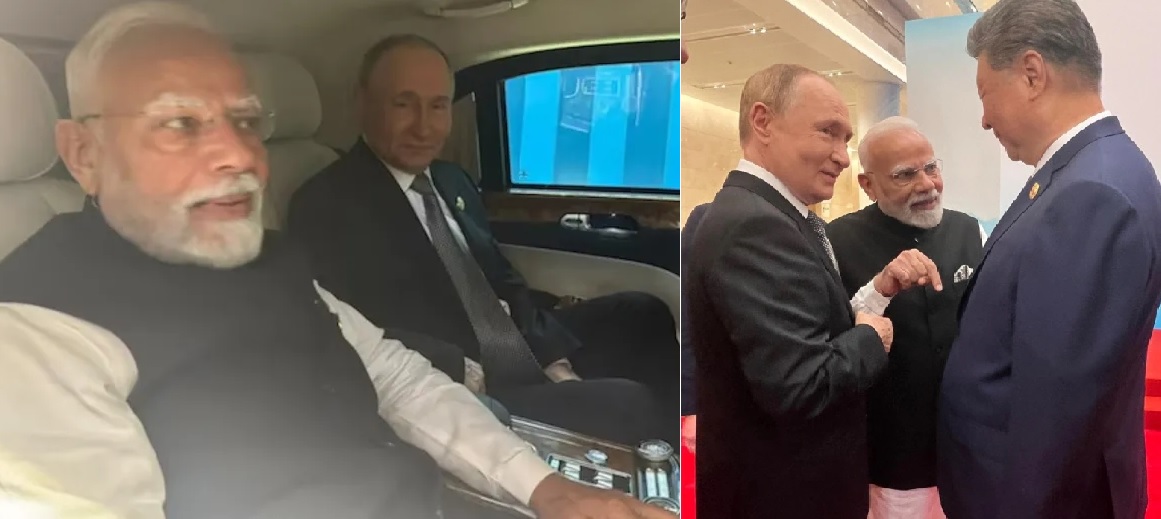 Death in Dhaka: CIA Links Surface After Putin Shielded Modi During SCO Meet
Death in Dhaka: CIA Links Surface After Putin Shielded Modi During SCO Meet
-
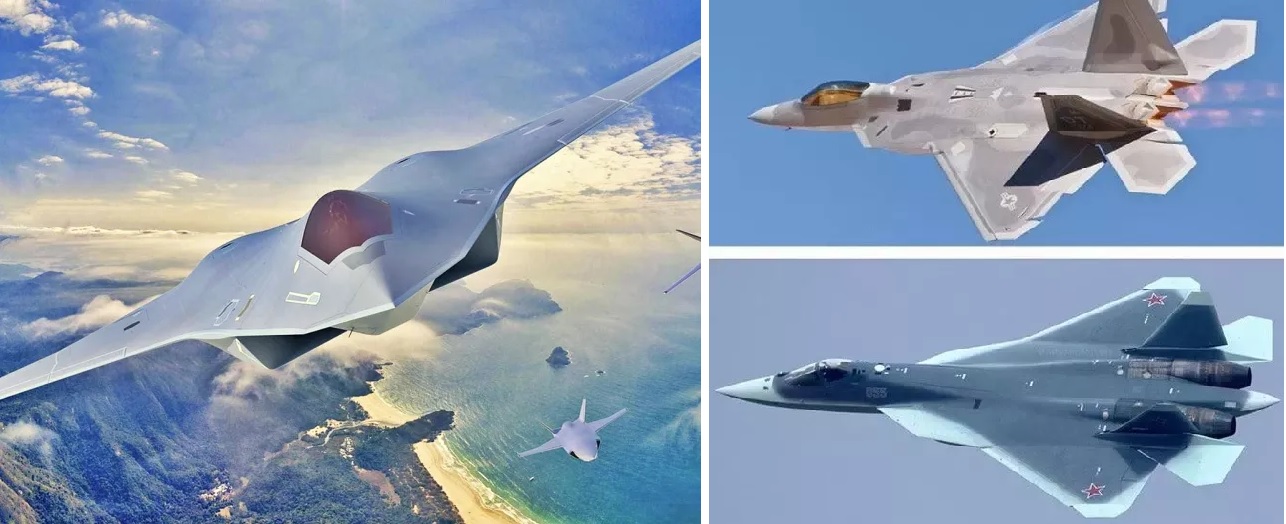 Key Differences Between 5th vs. 6th Generation Fighter Jets
Key Differences Between 5th vs. 6th Generation Fighter Jets
-
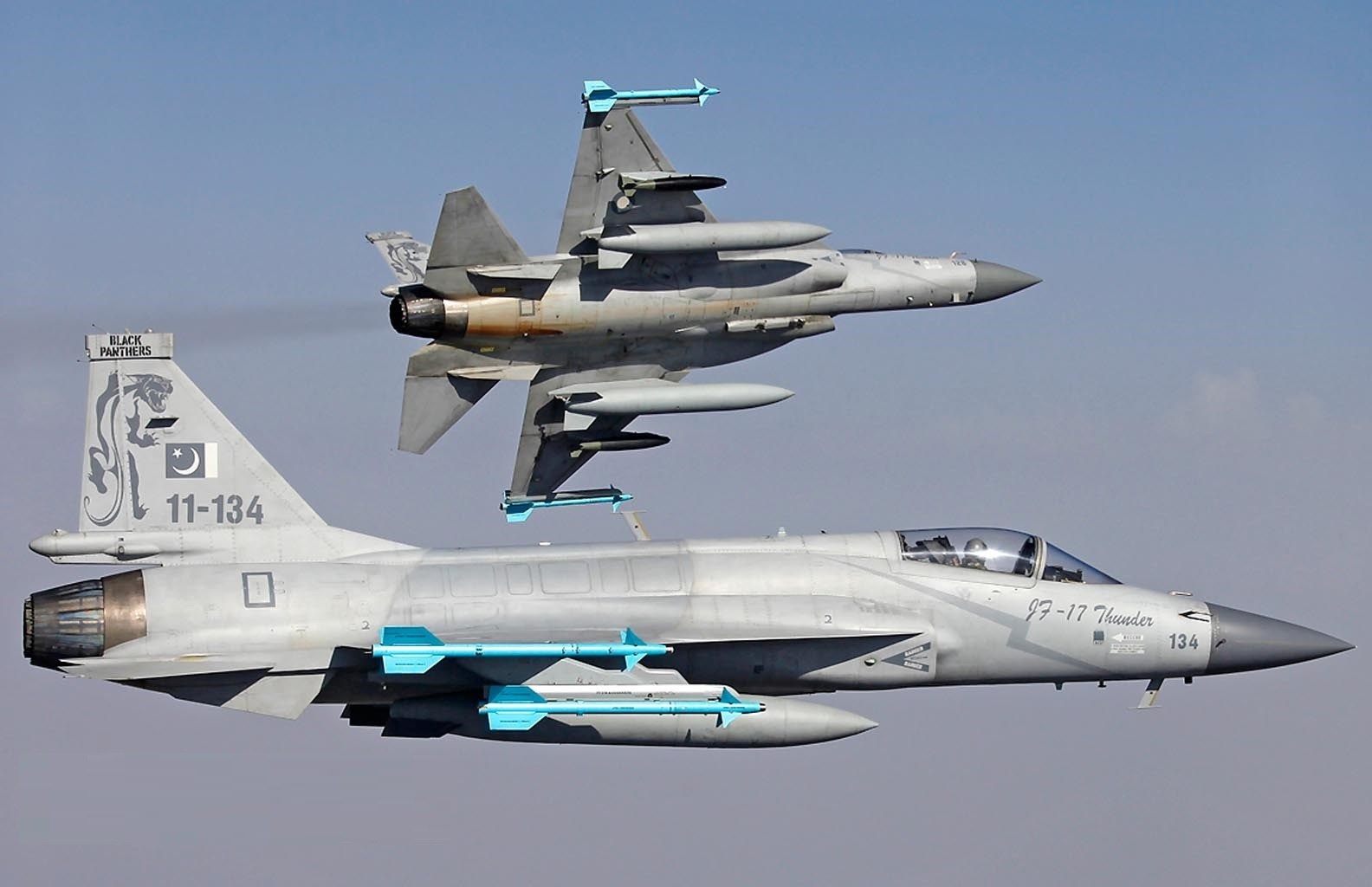 Pakistan Air Force to Unveil Stealth-Enhanced JF-17 Block 4 Fighter Jet by 2028
Pakistan Air Force to Unveil Stealth-Enhanced JF-17 Block 4 Fighter Jet by 2028
-
 India’s AMCA Engine Decision: Safran vs. Rolls-Royce Final Expected by 2025
India’s AMCA Engine Decision: Safran vs. Rolls-Royce Final Expected by 2025
-
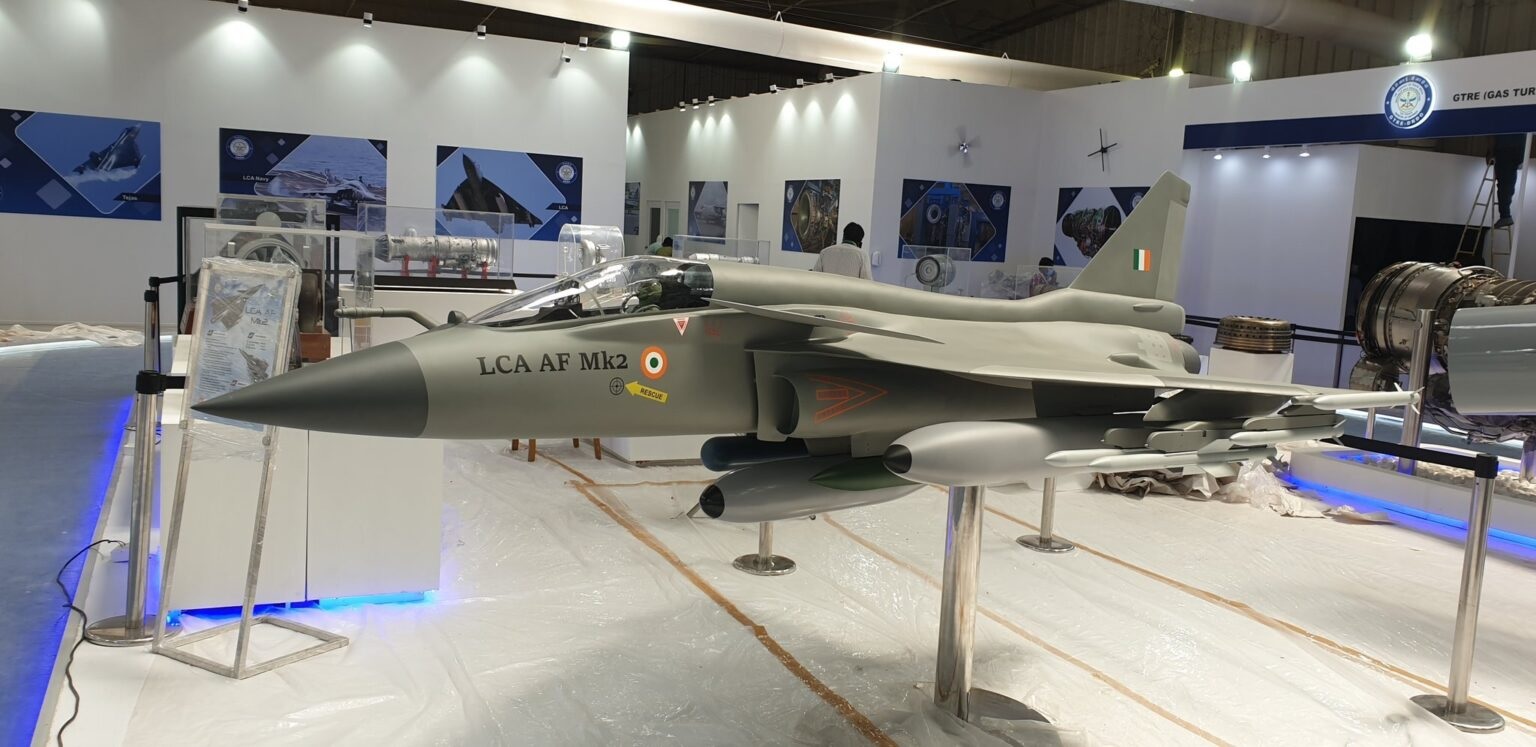 Tejas Mk2 Nears 2025 Rollout as HAL Ramps Up Final Assembly and System Integration
Tejas Mk2 Nears 2025 Rollout as HAL Ramps Up Final Assembly and System Integration
-
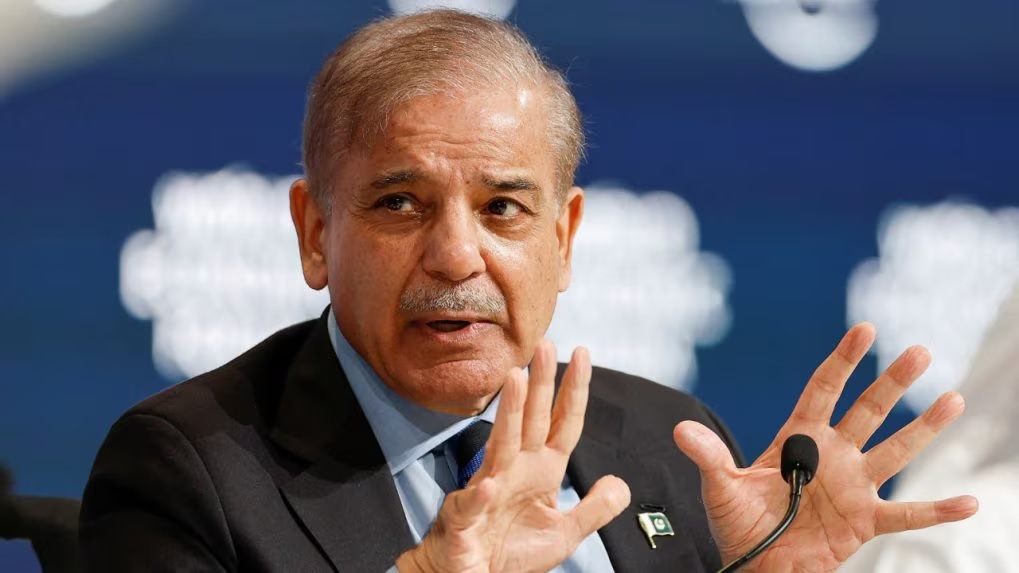 Pakistan Announces 15% Increase in Defence Budget for 2024-25 Amid Economic Crisis
Pakistan Announces 15% Increase in Defence Budget for 2024-25 Amid Economic Crisis
-
 India's TEDBF Program Takes Shape First Flight by 2028: Aiming for Naval Supremacy with Advanced Stealth and Technology
India's TEDBF Program Takes Shape First Flight by 2028: Aiming for Naval Supremacy with Advanced Stealth and Technology
Top Trending in 4 Days
-
 Pakistan Army to Deploy Troops to Gaza by January 2026 Under Trump–Munir Deal, $500 Per Soldier
Pakistan Army to Deploy Troops to Gaza by January 2026 Under Trump–Munir Deal, $500 Per Soldier
-
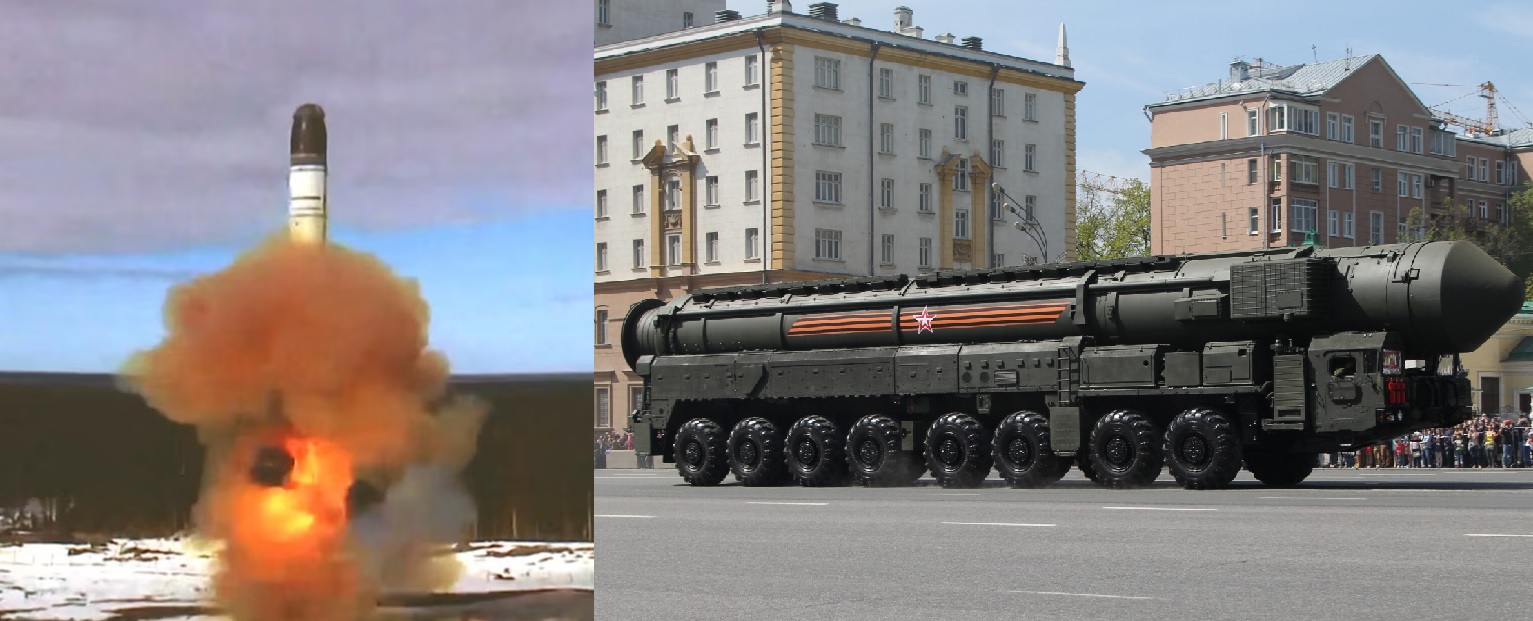 Russia Simulates Full-Scale Nuclear War in Siberia, Deploys Yars ICBMs on Combat Patrols
Russia Simulates Full-Scale Nuclear War in Siberia, Deploys Yars ICBMs on Combat Patrols
-
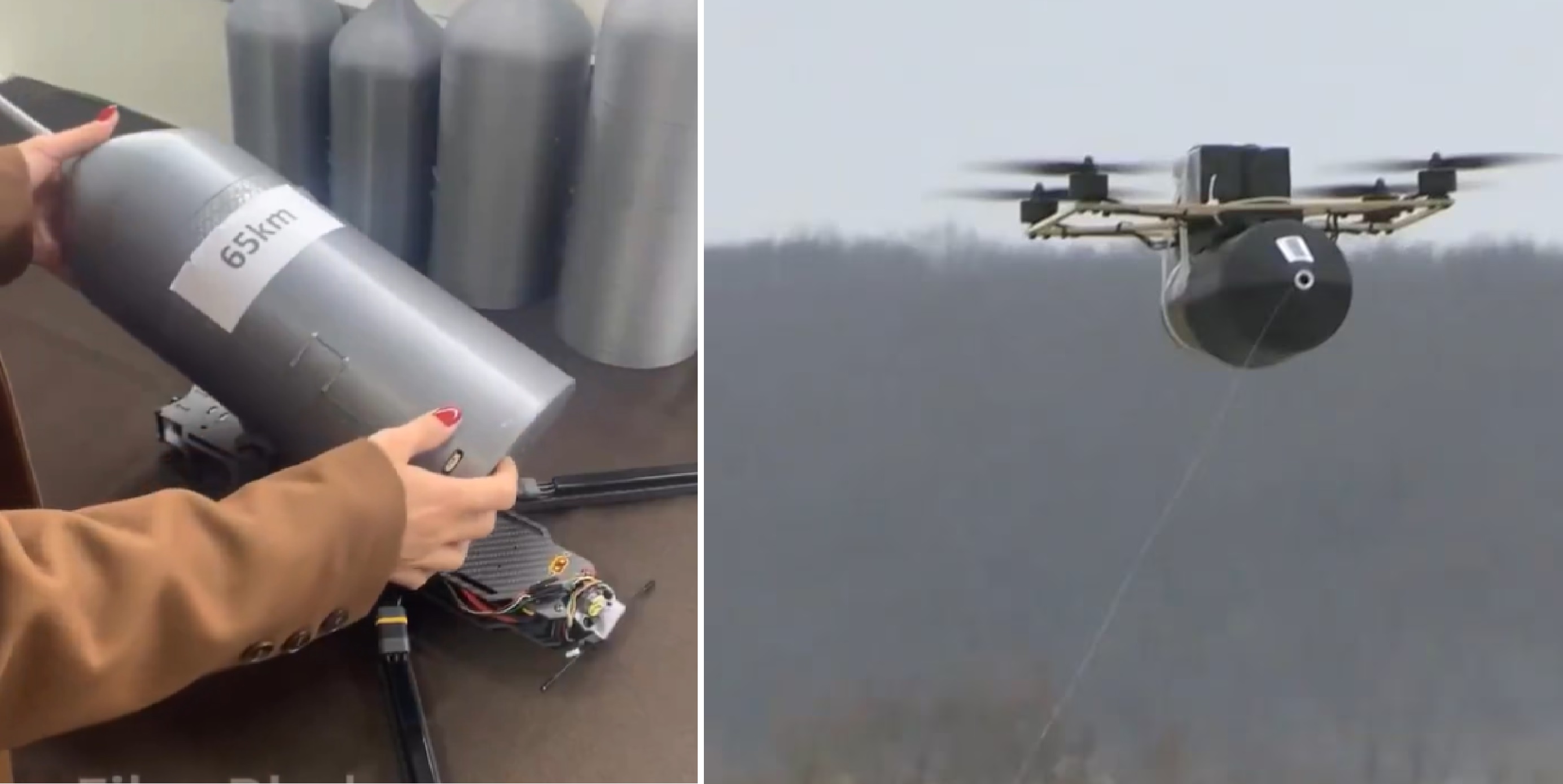 Russia Claims Test of 65-Kilometre Fiber-Optic FPV Drone Link
Russia Claims Test of 65-Kilometre Fiber-Optic FPV Drone Link
-
 Russian Su-57 Conducts First Flight With Next-Generation Izdeliye-177 Engine
Russian Su-57 Conducts First Flight With Next-Generation Izdeliye-177 Engine
-
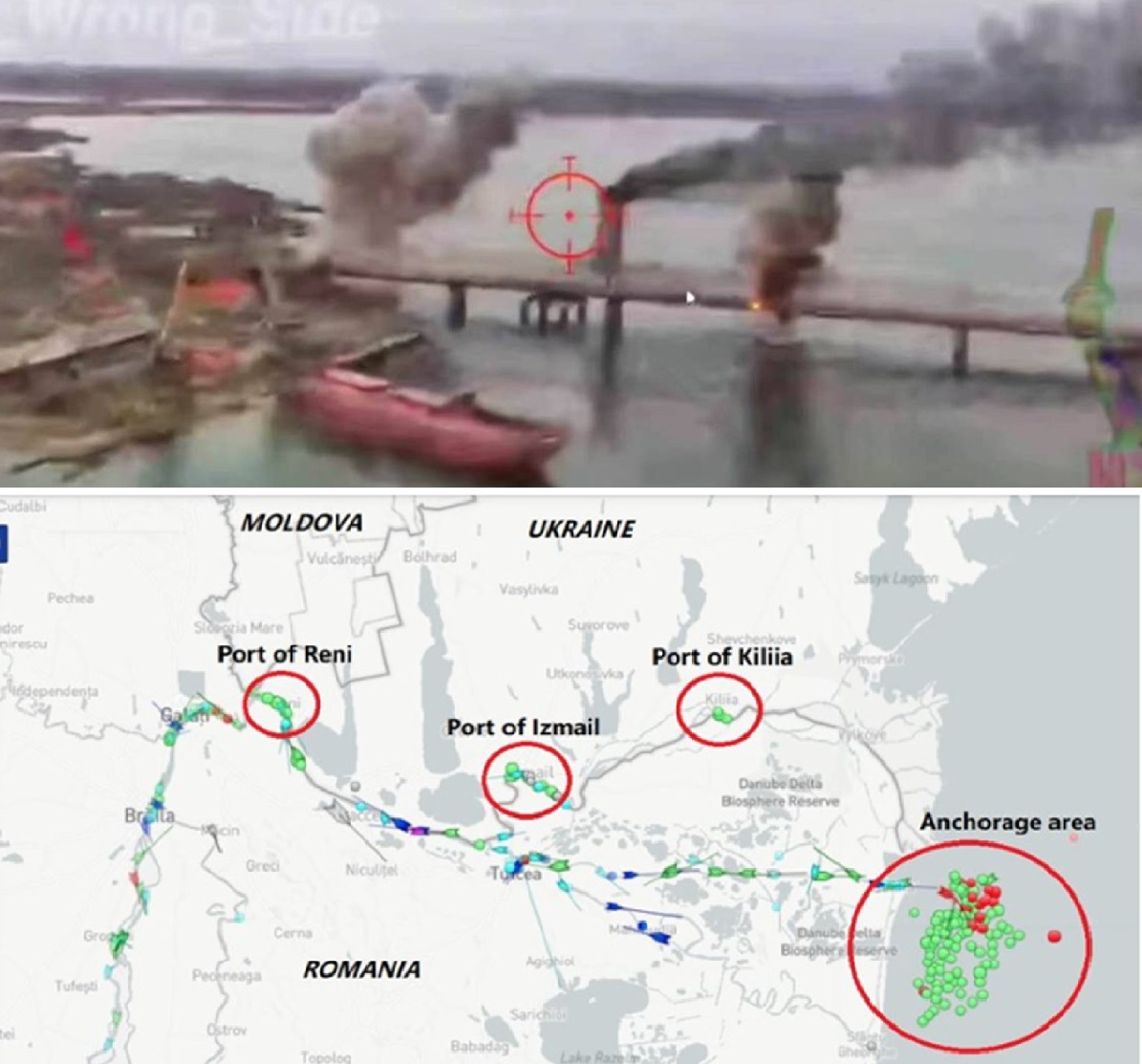 Russian Strike on Mayaki Bridge Threatens Up to 60% of Ukraine’s Fuel Supply
Russian Strike on Mayaki Bridge Threatens Up to 60% of Ukraine’s Fuel Supply
-
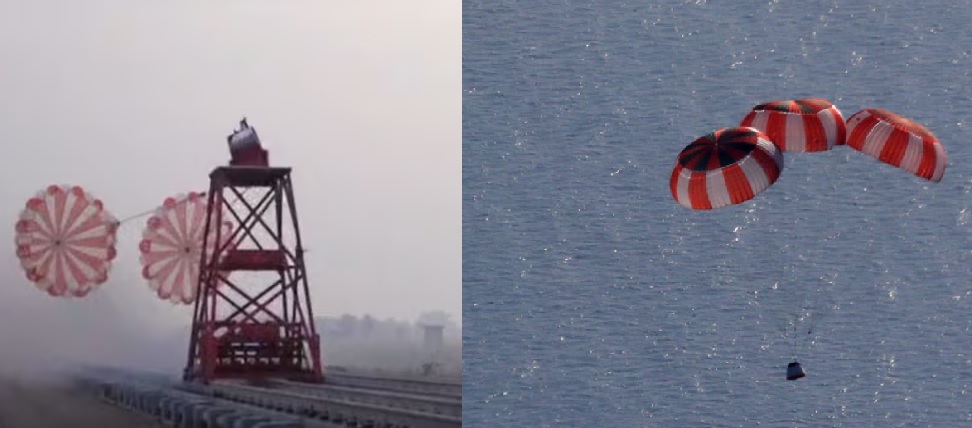 ISRO Successfully Qualifies Drogue Parachutes for Gaganyaan Crew Module
ISRO Successfully Qualifies Drogue Parachutes for Gaganyaan Crew Module
-
 U.S. Seizes China-Linked Oil Tanker Carrying Venezuelan Crude in International Waters
U.S. Seizes China-Linked Oil Tanker Carrying Venezuelan Crude in International Waters
-
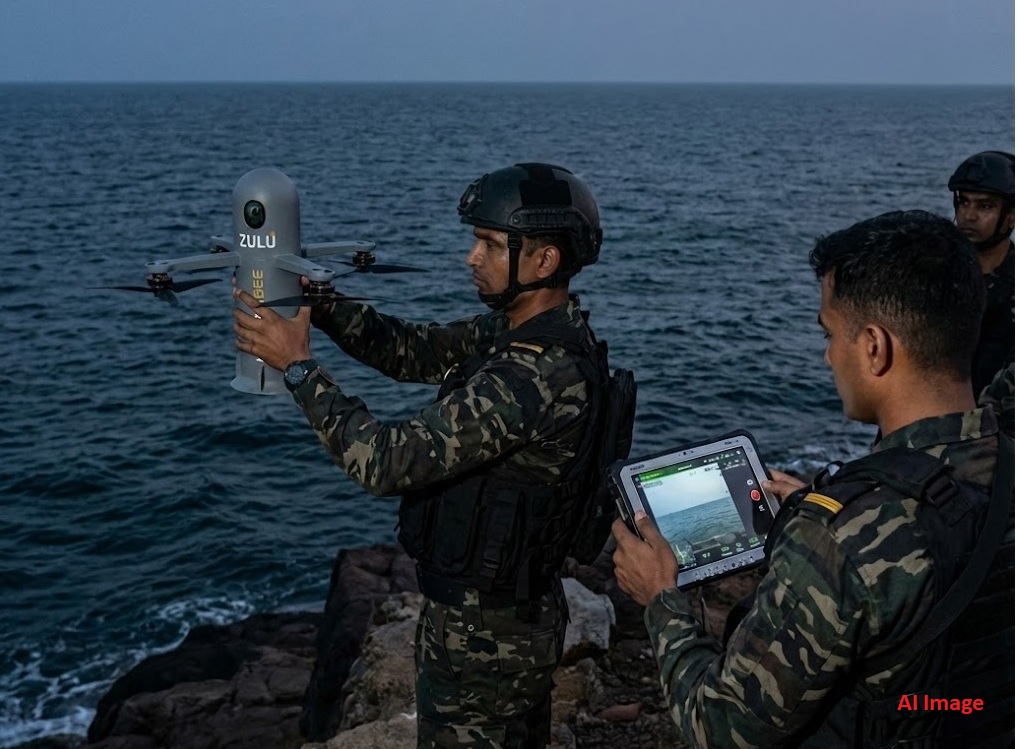 Indian Navy’s MARCOS Induct High-Tech ‘Hoverbee’ Kamikaze Drones for Stealth Operations
Indian Navy’s MARCOS Induct High-Tech ‘Hoverbee’ Kamikaze Drones for Stealth Operations
